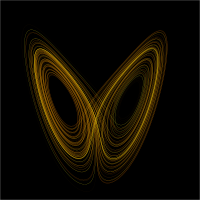
Photo from wikipedia
Optical confusion refers to a camouflage technique assimilated with the surroundings through manipulating colors and patterns. With the advances in multispectral imagery detection systems, multispectral camouflage studies on simultaneous deceptions… Click to show full abstract
Optical confusion refers to a camouflage technique assimilated with the surroundings through manipulating colors and patterns. With the advances in multispectral imagery detection systems, multispectral camouflage studies on simultaneous deceptions in the visible to infrared ranges remain a key challenge. Thus, creating pixelated patterns is essential for mimicking background signatures by assimilating both colors and patterns. In this study, a multispectral optical confusion system (MOCS) comprising pixelated silicon-based fractal nanostructures (Si-FNSs) is introduced to realize multispectral optical confusion. We analyzed the fractality of the Si-FNSs to understand the relationships between structural characteristics and optical properties with the aggregation phenomenon. The aggregation phenomenon changes the morphological heterogeneity by up to 38.5%, enabling a controllable range of visible reflectivity from 0.01 to 0.12 and infrared emissivity from 0.33 to 0.90. Visible and infrared colors were obtained by controlling the wet-etching time from 10 to 240 min and temperature from 40 to 100 °C. Finally, the MOCS consisting of pixelated Si-FNSs was designed and created by extracting the pattern from the simultaneously captured visible and infrared background images. Using the artificial backgrounds representing these images, we evaluated and compared the multispectral optical confusion performance of the MOCS with conventional camouflage surfaces.
Journal Title: ACS applied materials & interfaces
Year Published: 2022
Link to full text (if available)
Share on Social Media: Sign Up to like & get
recommendations!